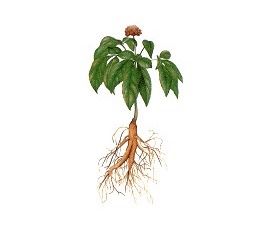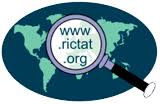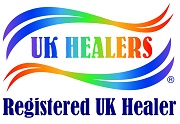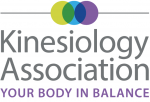Siberian Ginseng
(Eleutheroccus Senticosus)
Not to be confused with other ginsengs such as American ginseng or Korean Ginseng – this is quite a different plant – indeed it is not really a ‘true’ ginseng but something even more special and extremely safe and can be taken all the time (unlike other ginsengs). Siberian Ginseng is an adaptogen (see later) – while other ginsengs are not. A ‘tonic’ herb – it is a tall shrub that grows to 5-7ft, with leaves that look like horse chestnut. The flowers appear in July – the colour of these varying from cream, pale yellow, lilac or violet. It needs plenty of water all year round to flourish. It has been used in China and Asia for 2,000 years or more and was commonly used in ancient healing rituals for energy, fertility and all round healing. In 1959 the Ministry of Health in the former USSR (Russia now) authorised clinical tests, which sparked scientific interest. The Soviet government then officially approved the herb’s use as a tonic and in Russia still today is used by athletes, astronauts, climbers, miners, mountain rescuers and soldiers – to give then strength, endurance, energy, recovery from exhaustion and to calm the adrenals/nervous system after stress/intensive physical labour. 4,00 plants were screened by the government and they picked Siberian Ginseng to be the best as an all round super tonic.
Where can you find it? It grows abundantly in the wild in Siberia, Mongolia, Korea, China and Japan. A tough plant, it adapts to its surroundings; prefers sunlight but can tolerate extremely cold winters and sub-zero temperatures. You can grow it in Scotland and the USA however more successful plants for medicinal use have come from the countries listed previously.
Medicinal Uses:
What is an Adaptogen?
Adaptogenic herbs help the body ‘adapt’ and heal all systems/organs for men, women and children. Energy, recovery, rebalancing, rejuvenation for the kidneys, liver, heart, spleen, lungs, bowels, brain, immune system, adrenal system, endocrine system (hormones/thyroid), lymphatic system, nervous system, digestive system. Its is uplifting while calming – giving it a unique and sophisticated chemical action – meaning if you take it you are not made to feel sleepy or drowsy or indeed hyper and over-awake. It creates a great equilibrium in the body.
• Extreme fatigue, chronic fatigue, tiredness from physical exertion – though work or exercise.
• Recovery from long term illness and infections – particularly where someone has had to have bed rest because they found moving around very tiring. Can be used for post-cancer treatment recovery – e.g chemotherapy.
• Acute conditions that have worsened and become chronic – e.g common cough that has turned into a chest infection.
• Sexual health, low libido and fertility – for both sexes. Increases semen output.
• Poor neurological function – helps to normalise brain function.
• Excellent for stress, low moods, anxiety – balancing the nervous system. Good for dyslexia, autism and memory.
• Improves cerebral corticoid (steroid hormone) function and speed of brain.
• Increases oxygen consumption and improves respiratory effectiveness.
• Enhances liver protection and lessens liver cell regeneration.
• Lots of research on neo-natal brain development. Very safe in pregnancy and breast feeding. Helps to alleviate fatigue in pregnancy and recovery from giving birth or dealing with reduced sleep with a new baby.
• Good for managing low or high thyroid function – safe with thyroxin under practitioner supervision.
• Good for recovery from injury/enhances healing time. Has anti-inflammatory properties.
• Good for all ages from foetus to the very elderly.
• Can be taken long term, with no less effect. Accompanies herbs like Echinacea and Hawthorn well.
• Helps the body to resist infection.
• Improves hearing and sight.
• Very good also for someone who ‘over functions’ – always running around, fasting talking, unlikely to want to rest/calm down. This herb helps to settle a character like that.
Energetic Uses:
Those who lack emotional energy. In naturopathic terms excellent for those that have weak kidney and spleen energy/meridians. Totally revitalising for the mind. Improving happiness and zest for life. Good for calming an anxious person and bolstering an unconfident/fearful character.
Parts used:
Root.
Applications:
Tincture, capsules, herbal powder, tea or decoction made from the root.
Contraindications:
None. Safe in pregnancy, breastfeeding and infants onwards.
Other adaptogens:
Ligustrum, Astragalus, Rhodiola, Withania (in India called Ashwaganda), Schisandra. You could use these all in combination with Siberian Ginseng. Although Siberian Ginseng remains the King!











